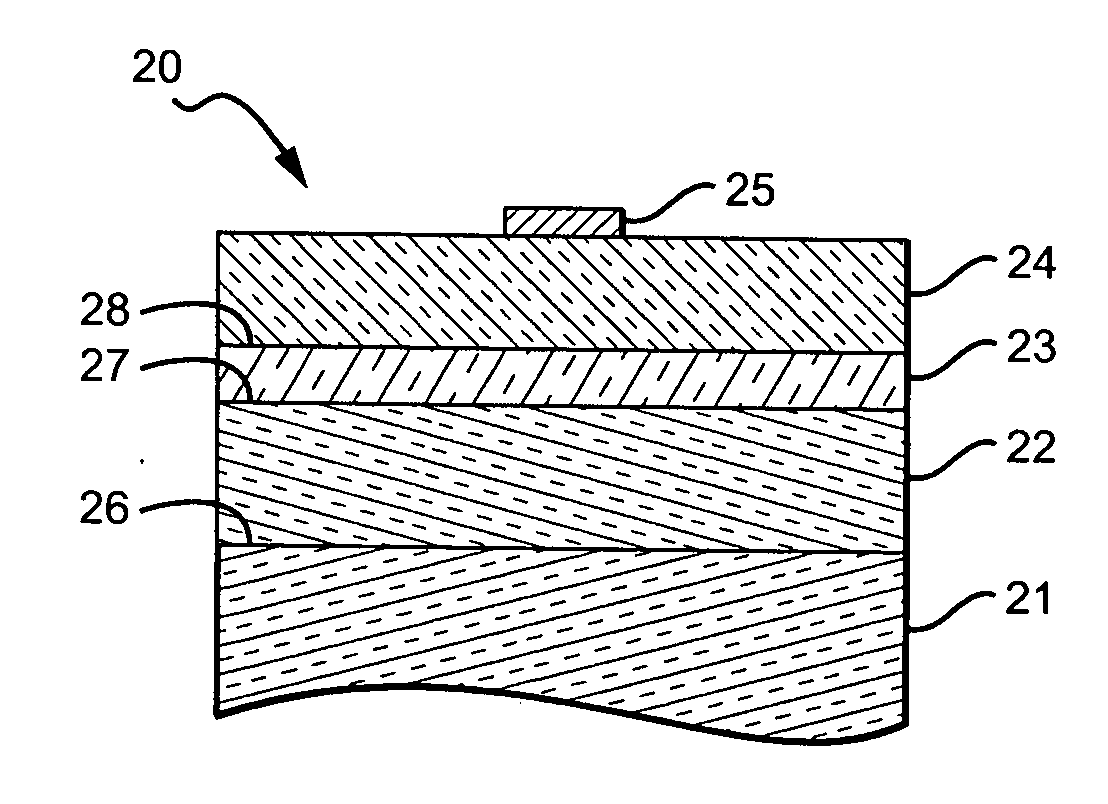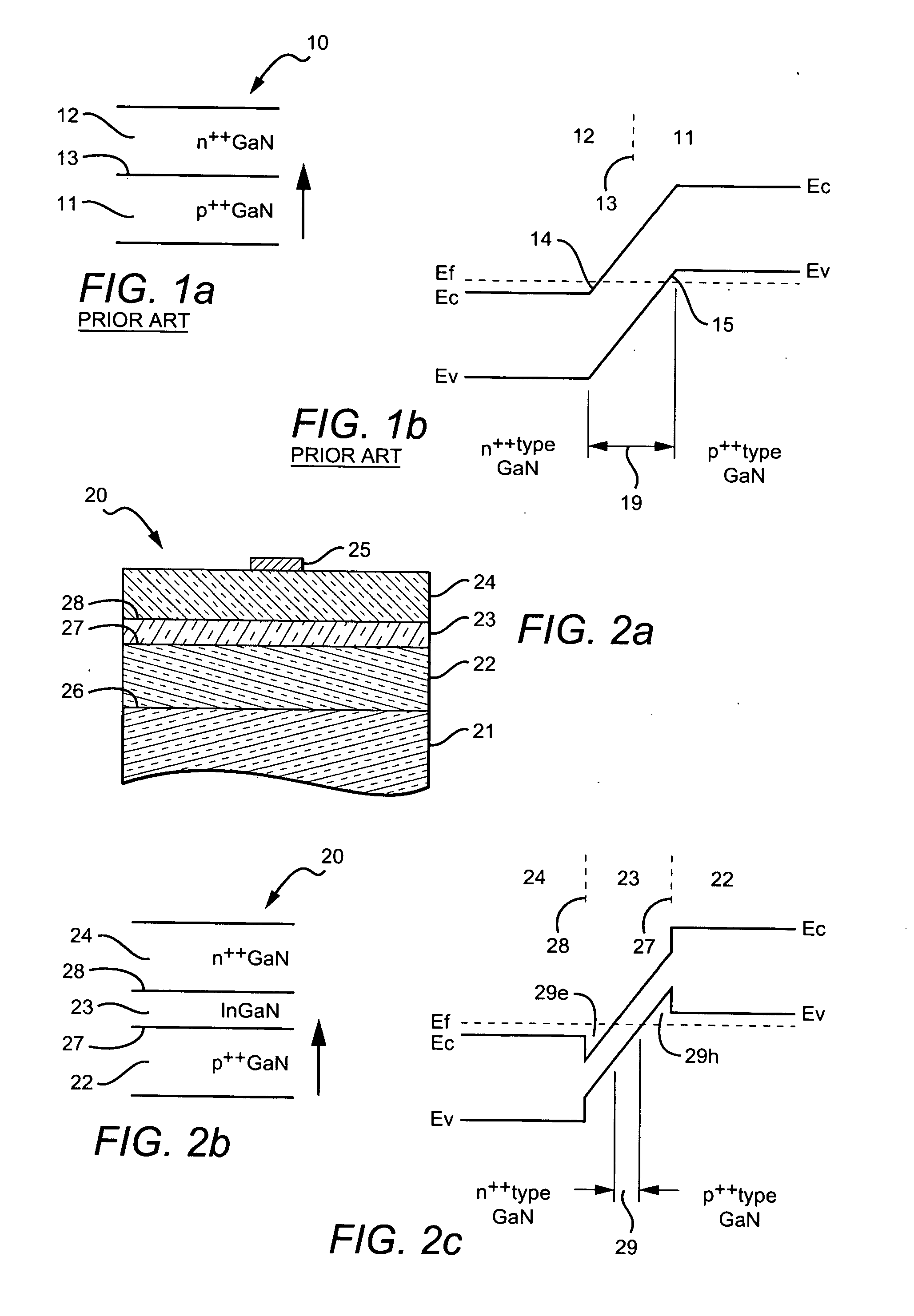Low resistance tunnel junctions in wide band gap materials and method of making same
- Summary
- Abstract
- Description
- Claims
- Application Information
AI Technical Summary
Benefits of technology
Problems solved by technology
Method used
Image
Examples
Embodiment Construction
[0027] The present invention is a low resistance tunnel junction structure in wide band gap materials. It will be understood, however, that the structures disclosed apply to semiconductor tunnel junction structures in general, where low resistance is desired, but in the absence of the present technique unavailable. These junctions may be fabricated from periodic table of the elements groups III-V and II-VI compound semiconductors, whose crystal layers are grown normal to a polar direction of the crystal. In one embodiment, the tunnel junction structures are presumed to have the Wurtzite crystal structure with layers comprising gallium nitride GaN, indium gallium nitride InxGayN, and aluminum gallium nitride AlxGayN where 0.3≦x≦1.0 and x+y=1.0. In this embodiment, except where noted, the top surface of the crystal has (0001) orientation with Periodic Table group III polarity.
[0028] In preferred embodiments, all of the layers are prepared by epitaxial growth methods, although it will...
PUM
 Login to View More
Login to View More Abstract
Description
Claims
Application Information
 Login to View More
Login to View More - R&D
- Intellectual Property
- Life Sciences
- Materials
- Tech Scout
- Unparalleled Data Quality
- Higher Quality Content
- 60% Fewer Hallucinations
Browse by: Latest US Patents, China's latest patents, Technical Efficacy Thesaurus, Application Domain, Technology Topic, Popular Technical Reports.
© 2025 PatSnap. All rights reserved.Legal|Privacy policy|Modern Slavery Act Transparency Statement|Sitemap|About US| Contact US: help@patsnap.com



